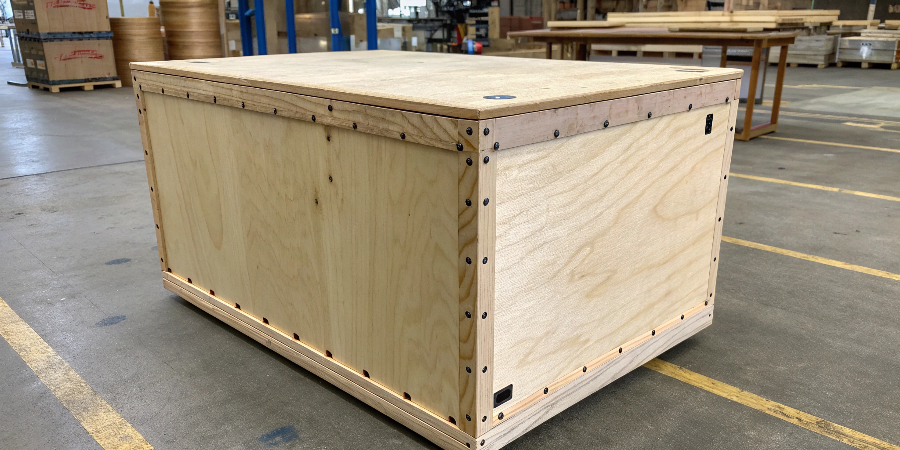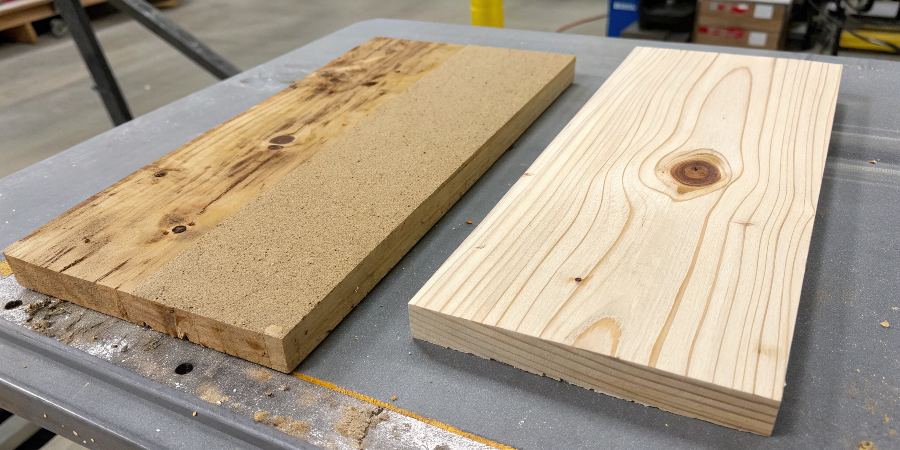Which Material Is Really Best for Kitchen Cabinets?
Choosing the wrong cabinet material leads to a kitchen that warps, stains, and falls apart. This mistake costs you money, time, and your reputation on a project you worked hard to build.
The best material is not a single product, but a combination: durable plywood for the cabinet boxes and a door material—like MDF for paint or solid wood for a classic look—that fits your project’s specific style, budget, and use.

Everyone asks me for the "best" material, but there is no single answer. From my factory floor in Foshan, I’ve learned that the most successful projects aren’t built with the most expensive material, but with the most suitable material. A luxury home has different needs than a high-use rental apartment. A humid, coastal kitchen in Southeast Asia requires a different solution than a dry one in Canada. The key is to stop looking for a single "best" and start defining the perfect balance of budget, durability, and style for your exact needs.
Which material is most durable for kitchen cabinets?
You worry that cabinet shelves will sag and hinges will pull loose over time. Choosing a weak material can lead to callbacks and angry clients, damaging your business’s credibility.
Plywood is the most durable and reliable material for cabinet boxes. Its cross-grain construction provides superior structural strength and moisture resistance, ensuring it holds its shape and keeps hardware secure for years.

When we talk about durability, we are primarily focused on the cabinet "carcass" or box. This is the skeleton of your kitchen, and it has to be strong. In my factory, plywood is the gold standard for a durable box. It is constructed from multiple thin wood veneers glued together, with the grain of each layer alternating direction. This crisscross structure makes it incredibly resistant to bending, warping, and shrinking with humidity changes. It also grips screws tightly, which is essential for mounting hinges and drawer slides that will endure thousands of cycles. While particleboard is cheaper, it can sag under the weight of heavy dishes and swells up like a sponge if it gets wet. Plywood provides peace of mind that the cabinet’s foundation is built to last, which is why it’s the professional choice for any quality project.
Which is better, MDF or PVC for kitchen cabinets?
You need a durable, modern finish but are confused by the options. MDF seems great for painting, but you’ve heard PVC is tough and easy to clean, making the choice difficult.
MDF is superior for a high-quality, painted or lacquered finish due to its perfectly smooth surface. PVC (thermofoil) is better for budget-conscious projects needing high durability, seamless edges, and easy maintenance.

This question involves comparing a raw material (MDF) to a finish type (PVC). It’s a common point of confusion. Let’s clarify.
MDF for Flawless Finishes
Medium-Density Fiberboard (MDF)1 is an engineered wood product made by compressing wood fibers and resin. Its main advantage is its incredibly dense, smooth, and stable surface. It has no wood grain, making it the perfect substrate for a flawless, glass-like paint or lacquer finish. It is the go-to choice for high-end modern and contemporary kitchens. However, its weakness is raw, unsealed edges, which are very susceptible to water damage.
PVC for Durability and Value
PVC, or thermofoil, is a vinyl film. This film is heated and vacuum-pressed onto an MDF door, wrapping seamlessly around the face and edges. The result is a highly durable, non-porous door that is scratch-resistant and very easy to clean. It’s an excellent choice for high-use kitchens, rental properties, and commercial projects where budget and durability are top priorities. Low-quality PVC can peel over time, especially with heat exposure, so a reliable factory source is essential.
| Feature | MDF (with Lacquer/Paint) | PVC (Thermofoil on MDF) |
|---|---|---|
| Finish Quality | Superior, perfectly smooth | Very good, seamless |
| Durability | More prone to chipping/scratches | Highly scratch & stain resistant |
| Water Resistance | Poor unless perfectly sealed | Excellent |
| Repairability | Difficult to touch up | Not repairable, requires replacement |
| Cost | Higher | More budget-friendly |
Which is better MDF or wood kitchen cabinets?
You’re deciding between the classic beauty of real wood and the sleek look of a painted finish. Wood feels premium, but you fear it will warp, while MDF seems less prestigious.
For a natural, stained look, solid wood is the only choice. For a stable, flawless painted finish, MDF is technically superior because it does not expand or contract, preventing cracks in the paint.

This is a classic battle between tradition and technology. The "better" choice depends entirely on the aesthetic you want to achieve for your project.
The Case for Solid Wood
Solid wood offers a timeless beauty and texture that cannot be replicated. The unique grain patterns and warmth make it ideal for traditional, transitional, and farmhouse-style kitchens. It feels authentic and high-end. However, wood is a natural material that "breathes"—it expands and contracts with changes in humidity. This movement can cause frames to warp and can lead to hairline cracks in the joints of painted wood doors over time. It is also a more expensive material.
The Case for MDF2
MDF2 is the champion of the modern painted kitchen. Because it is a stable, engineered product, it does not move with humidity changes. When you apply a paint or lacquer finish to an MDF2 door, it will remain smooth and free of cracks at the joints for years. It provides a perfect canvas for creating the seamless, monolithic look popular in contemporary design. While it doesn’t have the natural prestige of wood, it is the more practical and reliable choice for any solid color finish.
What is the best quality of kitchen cabinets?
You want to specify true, high-end cabinets for a luxury project. You need to know what materials and construction details separate premium cabinets from the standard-grade options.
The best quality cabinets combine a furniture-grade plywood box, premium HDF (High-Density Fiberboard) or solid wood doors, top-tier hardware from brands like Blum, and a meticulous, multi-layer factory finish.

Top quality is not about a single material but about a total system of superior components and craftsmanship. When B2B buyers ask me for my best, this is the specification I give them.
- The Box: It must be 3/4-inch (18mm) thick, furniture-grade plywood. This ensures the structure is rigid, stable, and moisture-resistant. The interior should have a real wood veneer, not a cheap paper laminate. The joints should be interlocked with dadoes or dovetails, not just glued and stapled.
- The Doors: For a painted finish, the best material is HDF (High-Density Fiberboard). It is even smoother, harder, and more impact-resistant than MDF, providing the ultimate surface for a flawless lacquer finish. For a stained finish, it must be solid hardwood.
- The Hardware: Quality is something you feel every time you open a door or drawer. This means using industry-leading hardware. Full-extension, soft-close drawer slides and soft-close hinges from trusted European brands like Blum are non-negotiable in a high-quality kitchen.
- The Finish: A premium finish is applied in a controlled, dust-free environment. It involves multiple coats of sealer and lacquer with sanding between each coat to build up a deep, durable, and beautiful surface.
Conclusion
The best kitchen cabinet material is the one that best suits your home and lifestyle. Balance your budget, daily use, and maintenance preferences to find the perfect fit for your project.
